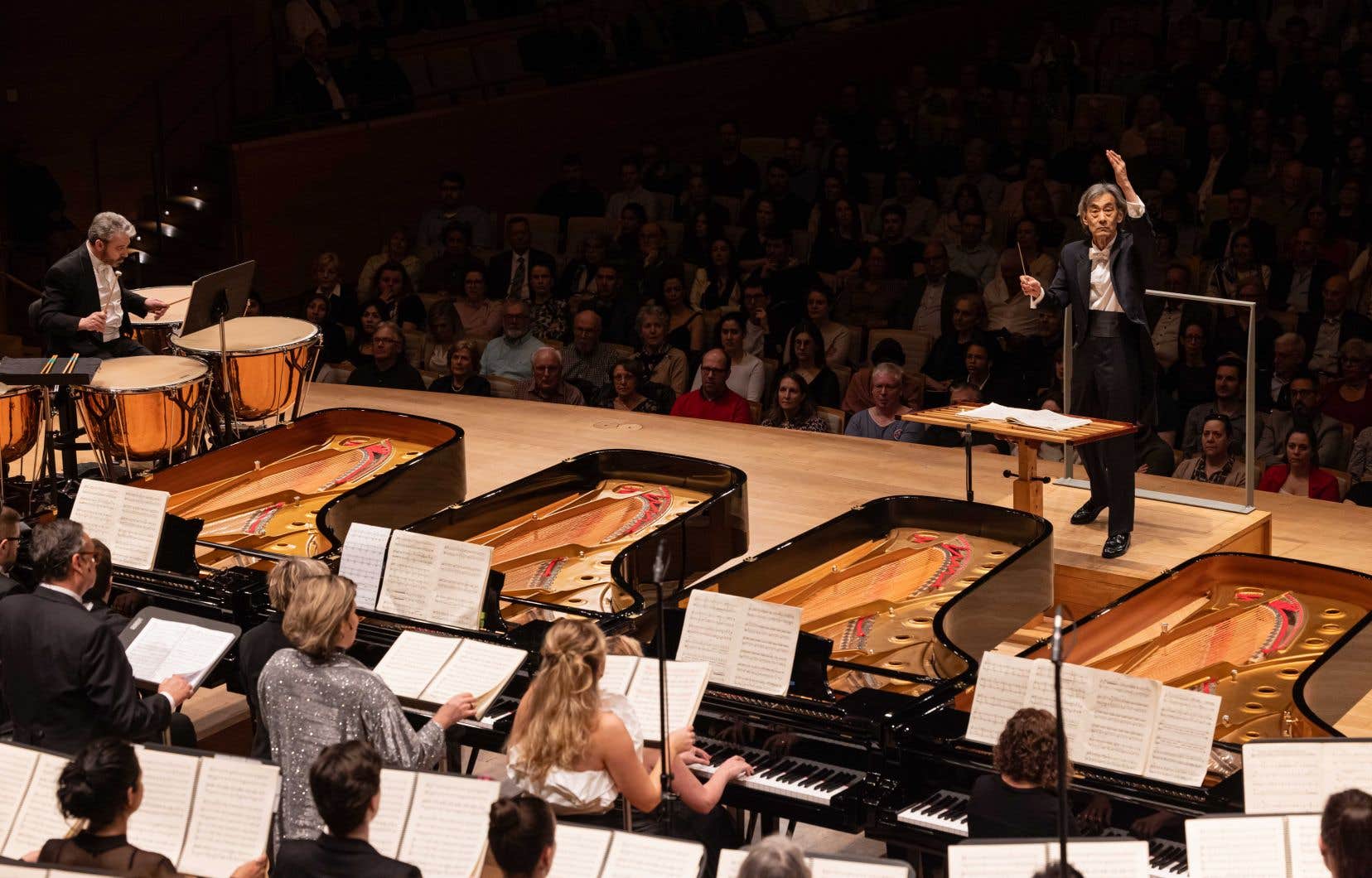The week’s concerts at the Montreal Symphony Orchestra (OSM) are entrusted to Kent Nagano, its conductor emeritus, whose popularity has not diminished in any way. His concert associating The wedding of Stravinsky and the Heroic Symphony by Beethoven filled the Maison symphonique and highlighted the conductor’s qualities in terms of rigor and clarity.
It is almost ironic to see Kent Nagano return to us in the Heroic Symphony by Beethoven, the work with which Rafael Payare, during his first test concert, made an impression, in an evening which ultimately led to his nomination.
The thing about masterpieces is that they can give rise to various valid versions. Kent Nagano chose a rather small orchestra, around fifty musicians gathered at the front of the stage. The truly impressive movement is the first, with real bite and impact, but at the same time admirable transparency and polyphonic readability. It’s a lively, translucent Beethoven, teeming with details, with clearly visible bassoons and chiseled nuances.
We were waiting for a Funeral parade particularly poignant, because Kent Nagano lost on Tuesday a close friend, the German musicologist and artistic director Dieter Rexroth, who was important in his career in Germany and also worked in the shadows as his very discreet musical advisor throughout his mandate at the OSM, as the orchestra confirmed to us yesterday. But these personal circumstances in no way affected what we heard. There Funeral parade was determined and tersely fatal.
Temporality
In the Finalthe conductor makes the little one play a concertino fugato from the beginning. This is a possible option in recent editions of the scores and it’s a pretty good idea. But Final is more of a very solid “mechanical” construction and does not quite have the breath of the 1er shutter. The coda is framed without excitement; musical performance is supposed to generate a form of power.
On the other hand, what is always so incomprehensible on the part of such a musician is his total insensitivity to ” pacing », which could be translated as “dramaturgical temporality”, of a symphonic work. The final breath ofHeroic stands in succession attack Or quasi attack of movements III and IV. There, once again, a fringe of the certain “Nagano public” applauds each movement and, as if on purpose, instead of keeping the tension after the Scherzo and moving on, the leader lets this active minority applaud the small movement of 5 minutes and turns around to encourage the thing. We have already seen this, and in worse circumstances (a totally prohibited stop, between theAdagietto and the Final of the 5e from Mahler to Lanaudière!); we’ll never really get used to it. Looking forward to itHeroic by Yannick Nézet-Séguin at OM next October: at least we are not sure of not suffering such a detestable musical extinction.
In the opening act, Kent Nagano directed The wedding by Stravinsky in the French version by Ramuz. We have no affinity with this version, which is certainly justified in a French-speaking metropolis, but has the disadvantage of allowing us to understand words of boundless cretinism. And, like it or not, the work was written in Russian. It flows in Russian.
It is perhaps our own habit of the Russian language in this work, but the reversals, the outbursts are so advanced in The wedding : they fall right, phonetically, in Russian and appear a little sluggish in French. In any case, hats off to the choir for having thus freed themselves from the pensum and congratulations to whoever presided over such a perfect distribution of soloists. The change of Matt Boehler in place of Rafal Pawnuk would have deserved an announcement on the microphone, because this last minute bass was excellent and funny. We were also happy to hear mezzo Ema Nikolovska in a more brassy and serious register than during her recital in Bourgie. She is impressive.
Kent Nagano’s interpretation is very cerebral, meticulous and oriented towards size and rhythmic implementation. It doesn’t really convey the atmosphere of the exuberant madness of the party, that higher level where the complexity of the score becomes a challenge that we play with, letting go and taking risks. But it’s better to “hold on” The wedding than launching into a confused mess.
